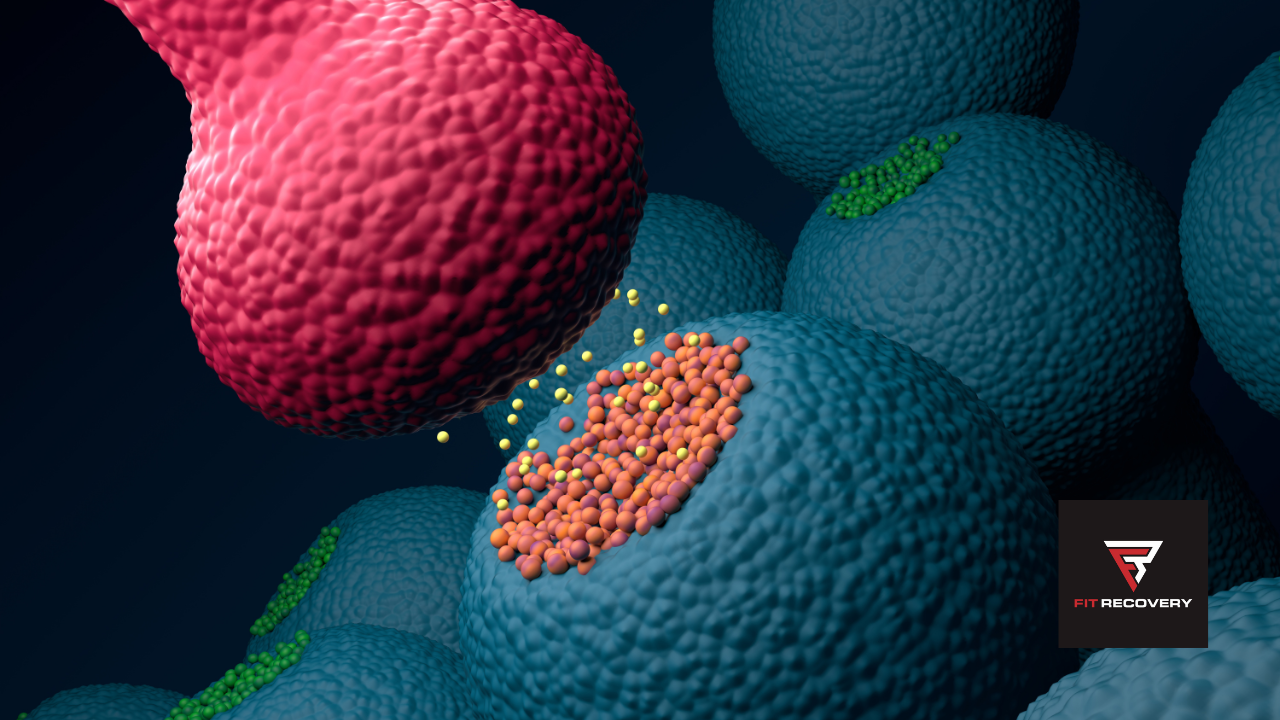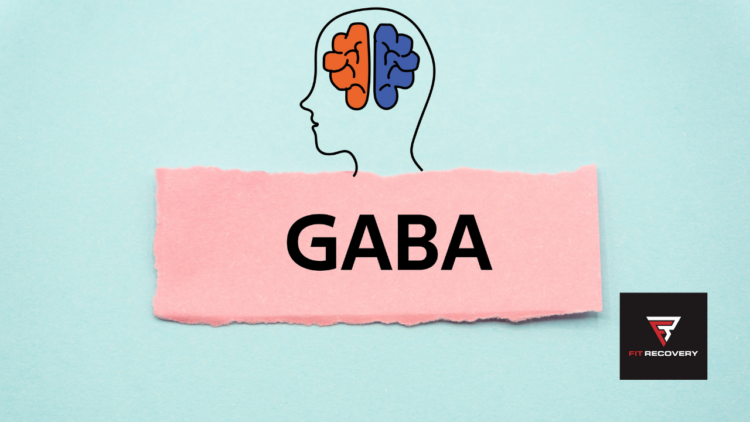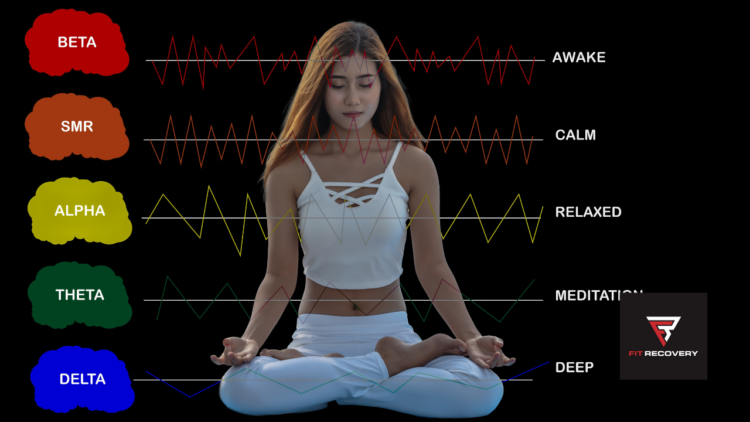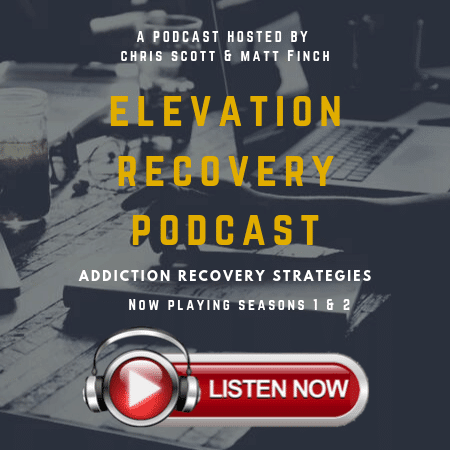
In this article, you’ll discover the major link between GABA deficit disorder and alcohol use disorder. It’s a vicious relationship where each disorder can cause and affect the other.
For example, someone with a GABA bankruptcy in their brain might have intense cravings for red wine every evening after work and then become alcohol-addicted after a few months of habitual drinking…
… or someone with alcohol dependence develops a GABA bankruptcy from repeated consumption of alcohol (in contrast, their natural GABA levels were optimal before addiction).
After learning about this notorious accord between two devastating disorders and how to boost GABA naturally, you’ll be well on your way to restoring your mind/body health and elevating your GABA to optimal levels.
By the end of this piece, you’ll know the answers to the following:
- What is GABA?
- What’s The Relationship Between Alcohol and GABA?
- How Does GABA Deficit Disorder Manifest?
- How to Boost GABA Production Naturally Using:
- Supplements
- Herbs
- Nutrition
- Other natural modalities
In the next few sections, you’ll learn about GABA, the relationship between GABA and alcohol, and how GABA can become deficient.
After that, I’ll reveal the best natural strategies for increasing and maintaining your GABA consistently high, including supplementation and dietary strategies.
Now that you know what’s in store for your learning criteria, let’s begin with a basic overview of the awesome neurotransmitter known as GABA.
What is GABA?
Gamma-aminobutyric acid (GABA) is an inhibitory neurotransmitter that humans create naturally. GABA acts as a “mental relaxant” and lowers the activity of neurons in the brain and central nervous system (CNS).
GABA is kind of like ‘brakes for the brain.’
It is known for its overall calming effects on the body and for regulating the sleep/wake cycle. If we experience feelings of anxiety or hyperactivity, it could indicate an imbalance in GABA levels.
When a person has optimal levels of GABA, they get the following effects:
- Relaxation
- Calmness
- Sound Sleep
- Alleviation of Pain
- Balanced Mood
- Regulation of Excitability
GABA is the brain/body’s main inhibitory neurotransmitter.
It helps your brain and body system calm down and relax by preventing excitatory neurotransmitters like dopamine and noradrenaline from overstimulating the brain.

GABA also helps slow the heart rate and breathing and relax muscles.
GABA Deficiency Symptoms
In those who are deficient in GABA, feelings of anxiety, stress, and worry can be common symptoms, leading to alcohol cravings.
Alcohol targets GABA receptors and mimics the effect of this neurotransmitter, helping to relax your mind/body deeply.
Here are some common symptoms of having low GABA:
- Anxiety
- Sleep disruptions
- Poor Sleep
- Difficulty staying asleep
- Depression
- Chronic stress
- Sad feelings
- Mood swings
- Muscle pain
Note: Have you ever strongly desired, craved, or even obsessed with alcohol after a stressful day and used an alcoholic beverage to calm down your mind, body, and nerves?
This is your body telling you that your GABA tank is running on fumes. While alcohol facilitates this, unfortunately, the negative side effects of chronic alcohol use far outweigh the temporary feelings of calm and relaxation.
What’s The Relationship Between Alcohol and GABA?
Alcohol can cross the blood-brain barrier super quickly. This is why, after drinking alcohol, its effects can be felt almost instantly. The brain has a highly intelligent way of preventing the overstimulation of neurotransmitters and maintaining balance.
For example, when alcohol intake is high, to avoid an excessive accumulation of GABA (as well as other neurotransmitters), receptor response is dampened (diminished, decreased, reduced).
This means that over time, you’ll need more of the substance to provide the same effect, which may lead to potential addiction and alcohol dependency.

How Does GABA Deficiency Manifest?
While some of the fastest ways to become deficient in GABA are regular consumption of alcohol or benzodiazepines like Valium or Xanax, many other variables can disrupt GABA levels or associated hormones and neurotransmitters.
Note that in addition to the list below being factors contributing to GABA deficiencies, these factors are also the primary risk factors or root causes of alcoholism and other drug addictions.
Here are the primary factors that lead to low GABA:
- Alcohol and/or benzodiazepine consumption. Over time, alcohol and/or benzodiazepine intake can cause down-regulation of GABA receptors, resulting in low GABA levels.
- Poor nutrition (soil depleted in nutrients/ maldigestion/ malabsorption/ poor food choices). The nutrients and cofactors in foods necessary to make GABA can affect GABA levels. Therefore, a poor diet can potentially cause low GABA levels. Some people can eat a healthy diet, but due to maldigestion or malabsorption, they may still have low GABA.
- Stress (acute and chronic). Over time, stress can cause elevated epinephrine, norepinephrine, and dopamine levels. As GABA rises to inhibit the effect of these catecholamines, it can become depleted.
- Genetic predisposition – Genetic factors and vulnerabilities could make achieving and maintaining optimal GABA levels for mood and behavior difficult.
Below is a list of safe and natural ways to activate GABA, enhancing overall health and mental well-being.
9 Proven Ways to Optimize Your GABA Levels
Here is where you’ll discover a host of proven and effective strategies and therapies for elevating GABA in your brain and body, thereby calming your mind and body and creating a biochemical and physiological environment that is not conducive to experiencing alcohol cravings or even the desire for alcohol.
In the following sections, you’ll learn about herbs, amino acids, minerals, foods, exercises, and other resources for supercharging your endogenous GABA production neuro-pharmacy and facility.
Let’s start with a little info on the controversial GABA supplements and whether or not they might be worth using to correct a GABA imbalance.

Does GABA Supplementatation Work?
Due to things like poor nutrition, stress, substance abuse, genetic predispositions, and toxins, a person can have low GABA levels. Many people have used GABA supplements to try and offset this deficit.
There is some debate in the scientific community as to whether or not GABA supplements are effective. The opponents of GABA supplementation believe that GABA products don’t pass the blood-brain barrier.
GABA supplements must pass from the bloodstream to the CNS to be effective, and many people believe that supplemental GABA doesn’t make it past the blood-brain barrier.
Additionally, there isn’t a lot of compelling research on GABA supplements. In my own experience, when I took 100 mg to 500 mg of GABA, I didn’t feel much… if anything at all. However, when I took 1,000 mg to 2,000 mg, I got relief from anxiety and insomnia while going through Suboxone withdrawal.
I guess that GABA supplements work well for some people; for others, they work a little, and for others, they still do not provide benefits.
We are all biochemically unique.
I think the recommended dosages of GABA supplements can often be doubled, tripled, or quadrupled without side effects.
GABA Supplement Research
While GABA research is limited, there are some studies that we can learn from.
Here is some GABA supplement research to consider:
- In a small study from 2006 with 13 participants, GABA was shown to help relieve stress and anxiety.
- In a 2012 study with 63 adult participants, 100 mg of GABA supplementation “showed that EEG activities including alpha band and beta band brain waves decreased depending on the mental stress task loads.” The study concluded that “GABA might have alleviated the stress induced by the mental tasks.”
- In a small 2018 study with only 40 participants, the participants who took 300 mg of GABA 60 minutes before bed fell asleep faster than those taking a placebo. They also reported improved sleep quality four weeks after starting treatment.
Finally, in a 2009 study involving 80 participants, GABA-rich Chlorella was shown to reduce high blood pressure. The study concluded that “these results suggest that GABA-rich Chlorella significantly decreased high-normal blood pressure and borderline hypertension and is a beneficial dietary supplement for preventing the development of hypertension.”
During alcohol withdrawal, your blood pressure skyrockets, leading to acute anxiety and insomnia, among other symptoms. So, anything that can help to stabilize your blood pressure could be helpful.

Mixing GABA with Serotonin
If you take L-Tryptophan or 5-HTP along with a GABA supplement, it is reported to allow GABA to enter the brain more easily.
Serotonin increases the permeability of the blood-brain barrier, which causes other nutrients to flow more freely into the CNS.
1) Foods and Drinks
Many people intentionally consume foods and beverages that contain GABA or boost GABA production in the body.
When I used to be prone to anxiety, I often did this regularly and also drank green, oolong, and black tea, which all contain GABA.
Here are some of the best foods for increasing GABA:
- Shrimp, halibut, and other fish
- Berries
- Cruciferous vegetables
- Sprouted grains
- Tomatoes
- Fava
- Lentils and other beans
- Potatoes and sweet potatoes
- Brown rice
- Spinach
- Broccoli
- Sunflower seeds
- Walnuts
- Almonds
In addition to adding more foods high in GABA, avoiding processed foods and artificial ingredients and focusing on consuming a mostly whole-food organic diet can help quite a bit.
2) L-Theanine
L-theanine is an amino acid that is not common in the diet. It’s unique because it’s neither an essential nor one of the common nonessential amino acids and is deemed a nondietary amino acid.
L-theanine is found primarily in plant and fungal species.
It was discovered as a constituent of green tea (Camellia sinensis) in 1949. In 1950, a laboratory in Japan successfully isolated it from your leaf (a type of green tea), which has a high L-theanine content. Along with green tea, L-theanine is also found in black, white, and certain mushrooms.
L-theanine increases mood-enhancing chemicals in the brain, such as:
- GABA
- Serotonin
- Dopamine
It can cross the blood-brain barrier and produce psychoactive properties.
L-theanine has been studied for its potential ability to:
- Reduce mental and physical stress
- Improve cognition
- Synergistically boost mood and cognitive performance with caffeine
- Reduce drug withdrawal symptoms
L-theanine significantly increases alpha wave production in the brain. Alpha brain waves are most present in a wakeful state characterized by a relaxed and effortless alertness.
Alpha states are sublime, flying, floating, lightness, peace, and tranquility. Alpha waves are present when your brain is in an idling default state, typically when you daydream or consciously practice mindfulness or meditation.

3) Chamomile
Chamomile is a flower of the daisy family and one of the most ancient medicinal herbs known to mankind. It is native to Europe, Africa, and Asia, where it has been used for centuries for medicinal purposes. Chamomile is also grown in North America.
While professional herbalists like my mom and dad could name several hundreds of herbs, the average person only knows of a few.
And almost everyone has heard of chamomile.
Chamomile is probably the most well-known and widely used herb in the US, where millions of people have used it for its many health-promoting benefits.
Some of the most commonly sought-after benefits of chamomile are as follows:
- Reduces stress
- Treats insomnia
- Boosts immunity
- Reduces muscle spasms
- Relieves period pain
- Soothes stomach pain
- Aids digestion
- Anti-inflammatory
- Promotes mental well-being
- Lightens complexion
Chamomile Medicinal Properties
Chamomile’s wide range of health benefits is due to its various bioactive phytochemicals. The dried flowers of chamomile contain many terpenoids and flavonoids, which contribute to their medicinal properties.
The main constituents of the flowers include several phenolic compounds.
Primarily the following flavonoids and their glucosides:
- Apigenin
- Quercetin
- Patuletin
- Luteolin
I’ll focus on chamomile’s main mechanism of action: its ability to bind to GABA receptors in the brain and increase natural GABA levels.
Apigenin is the chemical component responsible for chamomile’s anti-anxiety and anti-insomnia benefits.
Apigenin calms down the mind and body by binding to GABA receptors, thereby increasing GABA levels in the brain (like the woman drinking chamomile tea below).

4) Passionflower
Passionflower is a beautiful flowering plant that has a long history of use among Native Americans in North America and European colonists. Throughout history and today, passionflower has been used to treat some health conditions.
Passionflower has been used for around 14 conditions, but for this article, I will concentrate solely on how it can help with GABA and alcoholism recovery.
Passionflower is helpful for:
- Insomnia
- Gastrointestinal (GI) upset
- Nervousness and excitability
- High blood pressure
- Pain relief
Passionflower increases brain levels of GABA, so it’s mentally and physically relaxing/sedating and uplifting.
Passionflower also contains monoamine oxidase (MAO) inhibitors harmaline and harmine and several MAO inhibitors flavonoids, including apigenin, kaempferol, and quercetin.
MAOs are enzymes that break down neurotransmitters and stop their messaging activity.
Passionflower’s MAO inhibitors boost the following mood-boosting chemicals in the brain:
- Serotonin – Makes you feel emotionally relaxed.
- Norepinephrine – Increases energy, fights fatigue, fights depression, and helps the body respond to stress.
- Epinephrine – Increases energy, fights fatigue, fights depression, and helps the body respond to stress.
- Dopamine – Responsible for feelings of pleasure and enjoyment in life.

5) Lemon Balm
Lemon balm, Melissa officinalis, balm, common balm, or balm mint, is a perennial herbaceous plant in the mint family Lamiaceae. Native to south-central Europe, the Mediterranean Basin, Iran, and Central Asia, it has been cultivated since at least the 16th century as an ornamental plant for its oil (used in perfumery) and its many virtues.
It is now naturalized in the Americas and around the globe. The leaves are used as an herb, in teas, and as a flavoring agent.
Lemon balm is also strategically grown to attract bees for honey production.
According to Greek mythology, Melissa was a nymph who discovered and taught the use of honey. She was one of the nymph nurses of Zeus as a baby, but rather than feeding him milk, Melissa fed him, honey, hence the genus name Melissa (Greek for “honey bee”).
Brain Health Benefits
Lemon balm protects brain cells and supports brain health and function. Its antioxidants, such as eugenol, detain free radicals before they can attack brain cells. Rosmarinic acid, a key compound in lemon balm, is also beneficial in this way.
Members of the mint family, such as peppermint, rosemary, and lemon balm, generally act as cerebral vasodilators. This means they open the blood flow to the brain, providing more oxygen and glucose to brain cells.
If the brain doesn’t get enough blood, it can quickly affect brain function.
Animal studies show that lemon balm appears to protect the brain when provided shortly after such an episode.
Lemon balm also improves memory and brain function by binding to nicotinic and muscarinic receptors in the brain.
Both receptors are activated by acetylcholine, a neurotransmitter that enhances memory and alertness.
Relaxation and Sleep
Lemon balm increases GABA by inhibiting GABA transaminase, an enzyme that breaks it down.
Various studies have shown lemon balm to be effective at treating stress:
- In a pilot trial, lemon balm eliminated anxiety in 14 people with stress.
- Also, combining lemon balm and valerian root significantly reduced anxiety in 24 healthy volunteers.
If you have difficulty falling asleep, you will find an ally in lemon balm.
Studies show it encourages restful sleep:
- Evidence shows children sleep more peacefully throughout the night with lemon balm.
- In a study from 2011, lemon balm was shown to help with mild-to-moderate anxiety disorders and sleep disturbances.
- Another study found that menopausal women suffering from interrupted sleep reported much better rest after taking an extract of lemon balm and valerian.
Pain and Inflammation
An alcohol extract from lemon balm has been found to reduce pain by blocking the arginine-nitric oxide pathway and by increasing acetylcholine levels in mice.
Additionally, studies show that lemon balm reduces inflammation in mice caused by injury by reducing inflammatory proteins TNF-alpha, IL-1, and IL and lowering oxidative stress.
Stomach Issues & Melancholy
Lemon balm can help soothe digestive issues by preventing gastric ulcers. It also treats melancholy and has a wonderful way of uplifting one’s mood when feeling down.
6) Kava
Kava kava, or kava, is a plant native to the Western Pacific. It is widely consumed throughout Pacific Ocean cultures of Polynesia for its sedative (calming) and anesthetic (painkilling) properties.
Kava has the rare ability to induce relaxation while simultaneously improving mental clarity and cognitive function.
Cultures throughout the Pacific greatly respect kava and hold it in the highest regard. Traditionally, it’s prepared in a “kava bowl.” These Pacific cultures frequently hold kava ceremonies, often accompanying important political, religious, and social functions.

Kava is Similar to Alcohol
Many individuals have consumed kava for anxiety, depression, and insomnia. The active ingredients in kava are known as kavalactones.
These kavalactones induce effects similar to alcohol, such as:
- Relaxation
- Talkativeness
- Euphoria
However, unlike alcohol, kava induces these effects while still maintaining mental clarity in the user.
The kavalactones in kava contain the following properties:
- Anxiolytic (anti-anxiety)
- Analgesic (painkilling)
- Muscle relaxing
- Anticonvulsant (anti-seizure)
The following pharmacological actions have been reported for kava and/or its main active ingredients:
- The potentiation of GABA receptor activity increases GABA (our natural Valium) levels in the brain, promoting mental relaxation and restful sleep.
- It inhibits the reuptake of dopamine and norepinephrine, which increase pleasure, euphoria, and concentration.
- Agonism of the CB1 receptor leads to very mild effects similar to those of THC, an active ingredient in marijuana.
Since kava has these diverse methods of action in the brain, using kava for alcohol withdrawal might relieve a variety of symptoms, including:
- Anxiety
- Fatigue
- Sore muscles and aching limbs
- Depression
- Restlessness
- Insomnia
Health Concerns Regarding the Use of Kava
Despite all of the amazing benefits of kava, there is still a lingering myth that kava can cause liver toxicity from taking the recommended dosage for just a couple of months.
The following passage is quoted directly from the article Kava: The anti-anxiety herb is making a comeback, written by Chris Kilham, an ethnobotanist on the Medical Advisory board of the Dr. OZ show who has conducted medicinal research in over 40 countries.
Here is a passage from the article:
“In 2001, Duke University Medical Center conducted two studies on kava extract. One study showed that kava is safe for the liver, causing no noticeable problems. The other study revealed that kava extract is as effective for the treatment of anxiety as the benzodiazepine class of drugs (Xanax, Valium), without the hazards caused by those medicines. Out of the blue, one week prior to the publication of the Duke studies, a European-based report declared, contrary to all previous known medical science, that kava had caused liver toxicity in 21 people.”
“Kava sales crashed, insurance companies panicked, European health regulators over-reacted and Pacific islanders were left with their pockets turned out. It took several years, and the dedicated efforts of many medical research teams to establish that the kava liver toxicity report was shoddy and baseless. But the damage to kava was done. To this day, despite absolutely no evidence of liver toxicity among kava drinkers, and despite liver safety demonstrated in medical studies, kava still carries the taint of concerns over liver toxicity.”
– Chris Kilham

7) Valerian
Valerian is a perennial flowering plant native to Europe and parts of Asia. It has also been introduced to North America. Valerian has been used as a medicinal herb since ancient Greece and Rome.
Because valerian has been used historically as a sedative, antiseptic, anticonvulsant, migraine treatment, and pain reliever, most basic science research has been directed at the interaction of valerian constituents with the GABA (gamma-aminobutyric acid) neurotransmitter receptor system.
In the brain, valerian is thought to bind to GABA receptors. By blocking some nerve impulses from reaching the brain, the herb seems to shorten the amount of time it takes to fall asleep as well as improve the quality of sleep that results.
Valerian is also believed to lessen anxiety because it binds to GABA receptors and inhibits nerve impulses and stress-related messages from reaching the brain.
Pain Relief and Sedation
Since valerian root is so effective at reducing stress and tension naturally, this also translates to reduced muscle tension. In a study from 2005, researchers tested the antispasmodic effects of valerian root in animals. Valerian root extract significantly reduced the tension and spasming of digestive muscles in rabbits and guinea pigs.
When valerian root is used internally for muscle pains, the plant may work directly on the nervous system as a natural pain reliever or analgesic.
In a 2010 study, researchers found that the whole extract and the isolated essential oil of the plant had significant analgesic effects on rats. In addition, the essential oil of valerian root increased the effectiveness of aspirin.
Contraindications
To avoid excessive drowsiness or possibly other complications, don’t take Valerian with:
- Muscle relaxants
- Narcotic pain relievers
- Prescription sleep medications
- Tranquilizers
- Other drugs that make you sleepy (including certain antihistamines)
Never take Valerian:
- With alcohol
- While pregnant
- While breastfeeding
List of Possible Side Effects
At recommended doses, valerian generally doesn’t produce side effects. Some individuals may experience drowsiness when taken during the daytime.
Extremely large doses may cause:
- Excitability
- Dizziness
- Blurry vision
- Nausea
- Restlessness

8) Supplements
In addition to the nutritional and herbal strategies and L-theanine, other supplements can help support GABA production.
Here are some other helpful GABA-support nutrients to review:
- Magnesium—Stimulates the activity of cerebral GABAergic systems by behaving as a modulator of GABA receptors, increasing their activity.
- Vitamin B6—It’s a cofactor for glutamic acid decarboxylase and GABA transaminase, the enzymes required for the synthesis and metabolism of GABA in the brain.
- Taurine—Binds to and activates GABA receptors and modulates and inhibits stress hormones from over-production.
9) Natural Therapies
You’re almost to the end. Now, all that’s left to discover is a bullet-point list of additional natural therapies for GABA optimization.
Here are some other natural GABA-boosting therapies to review:
- Exercise (especially HIIT)
- Qigong
- Taichi
- Yoga
- Meditation
- Gratitude
- Nature immersion

Key Concepts
Now that you’ve learned about “The GABA Deficiency-Alcoholism Connection” and how to do strategic GABA repair using the best natural modalities, it’s time to review the key concepts.
These fundamentals will help you to discern the essence of this topic.
Seven key concepts on the link between GABA deficiency and alcohol addiction:
- GABA is the primary inhibitory neurotransmitter in the brain. It acts like a brake for the brain, mind, and body.
- Alcohol binds to and activates GABA receptors.
- Repeated consumption of alcohol can cause GABA deficiency, as can stress, toxins, poor nutrition, and genetic vulnerabilities.
- GABA deficiency can result in anxiety, insomnia, alcohol cravings, and alcoholism.
- Correcting GABA deficiency can often stop the addictive cycle of on-and-off drinking.
- You can elevate your GABA by abstaining from alcohol and other GABAergic drugs and using GABA-boosting strategies like diet, supplementation, herbal medicine, exercise, and other natural therapies.
- Some of the best supplements for GABA optimization are L-theanine, chamomile, passionflower, lemon balm, kava, valerian, magnesium, taurine, and vitamin B6.
If you have any comments or questions, please post them in the comment box below.






Excellent article, Matt!